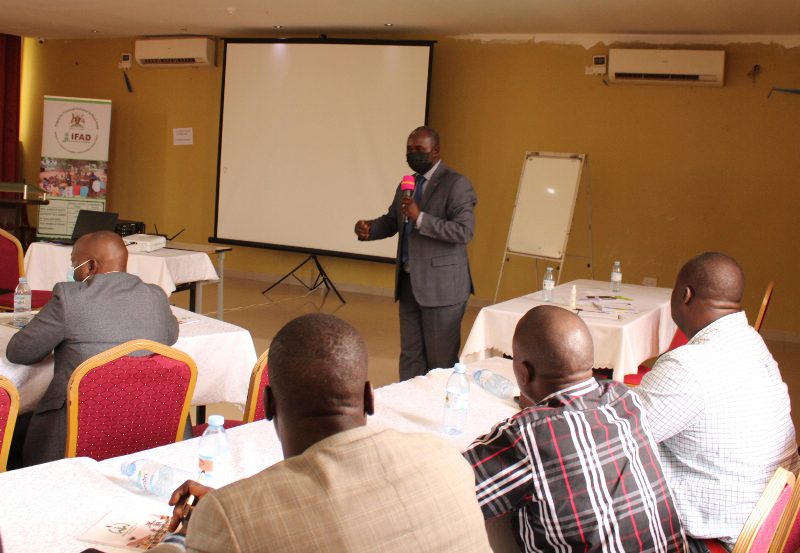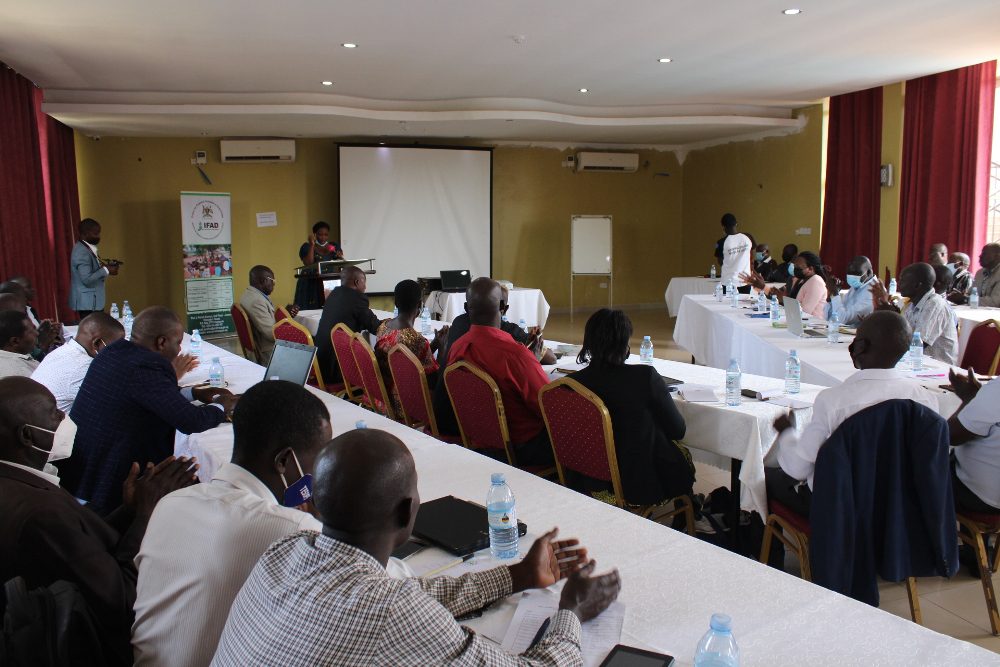
MBALE – Although it is a common feature in Uganda for women to come to community meetings with a 20-litre jerry can – a visible symbol and message from the women that says “please complete the meeting and go to complete household chores”, Profira seems to have changed this in Eastern Uganda.
A report by South Eastern Private Sector Promotion Enterprise Ltd [SEPSPEL], a service provider for Project for Financial Inclusion in Rural Areas (PROFIRA) says, the project has contributed towards empowerment of women in households.
“Women have reported that they have gained more respect as a result of their ability to contribute towards household requirements as a result of participating in Community Savings and Credit Groups (CSCGs) activities,” says the reports accessed by PML Daily.
The report presented at Wash and Wills 26 May by Mr John Mpaata at the closure of the service providers meeting adds that it is evident that most women CSCG members are engaged in a small scale income generating activity to supplement household requirements.
The report revealed that self-esteem/confidence levels have been built among women who now can boldly take up leadership roles and also take active participation in the decision making processes within their groups/communities.
“And this has been achieved through training of members and management committees in meeting procedures, leadership emphasizing their roles and responsibilities as well as records and information management,” a report by Mr Mpaata of SEPSPEL reads in part.
The report says that in the four years of PROFIRA, Women who earn income are more respected than before at home and within the community and that this is particularly noticeable in the household decision-making process regarding management of resources.
Women CSCG members attested that their opinions are now taken into consideration, laying foundations for a cordial exchange based on mutual respect, and a common understanding.
Mr Mpaata’s report adds that Integration of business skills, financial literacy in CSCGs provided greater opportunities for CSCG members to make informed decisions on saving goals and invest in viable businesses as evidenced in the various success stories shared by the beneficiaries.
The report read at the END OF PROJECT CLOSE meeting 26 May says that in bid to sustainably increase access to and use of financial services by the rural population, SEPSPEL targeted establishment of 2500 New Community Savings and Credit Groups (CSCGs) but that at closure they had 2656 CSCGs.
The report adds that out of the cumulative savings of 6, 478, 892, 789, women had a cumulative saving of Shs 4, 022, 241, 780 while men had Shs 2, 456, 645, 300 as their cumulative saving figure.
In another report presented by Uganda Women Efforts to Save Orphans [UWESO/COMVIS Consortium] reveals that in the mid-Eastern 14 districts, Soroti led with 162,557,500.00 savings and that the loans amount in the entire region rose to Shs 1,011,063,869.
The report by UWESO revealed that 92 villages were identified and 39 already trained to technically support the existing CSCGs and that they also linked 148 CSCGs to formal financial institutions for continuous access to financial products and services beyond the project lifetime for sustainability.
The report reveals further that over 300 CSCGs were registered in respective local governments to enable them tarp opportunities that target organized groups in respective and that 6 CSCGs have been linked with economic actors for continuous support in extension services, supply of inputs, raw materials and market access.
Ms Ritah Namuwenge, the national coordinator of Emiyooga emphasised the need for an operational culture of discipline, transparency and consistency in order to increase savings for investment for every group.
She explained that savings Groups work with their members’ own money, so fraud and loss should in most cases be unheard of, adding that disciplined, transparent and consistent operating procedures are integral to the sustainability of Savings Group.
“And this coupled and reinforced with a training and supervision schedule throughout the first cycle makes the savings group stronger and sustainable beyond ages,” said Ms Namuwenge.
She revealed that PROFIRA has triggered many development initiatives in Uganda like Emiyooga, Parish Development model that are all government initiatives to convert the percentage of the country’s homesteads currently in subsistence to market oriented production.
“All these initiatives by the government are meant to help people increase their household incomes and join the money economy but of course they need you to learn to save and be disciplined as far as finances are concerned if we are to achieve anything,” said Ms Namuwenge.

Mr Richard Ndyanabo, the principal economist at the Ministry of finance, Planning and economic development said the report clearly shows that CSCG members are fully on the road to financial independence.
“And I am happy that they have “woken up” and many have realised that they are responsible for making the most of this opportunity to improve their lives and I want to encourage others to save and invest if they are to develop,” said Mr Ndyanabo who represented the commissioner at the meeting.
He urged members that other SACCOS should adopt the strategy of equipping their members with enough business skills that will improve their incomes as well as increase the savings of the members.
ABOUT PROFIRA
The government of Uganda and the International Fund for Agricultural Development (IFAD) recognised the continuing need to promote rural finance; and both see the focus on financial inclusion as one of the key pillars of Uganda’s efforts to eradicate poverty. In line with that, IFAD and GoU designed the Project for Financial Inclusion in Rural Areas (PROFIRA) in 2013.
The project focuses on the large portion of the rural population that has little or no access to financial services and on two rural institutions that have successfully demonstrated that sound and appropriate financial services can be provided to even the poorest members of rural communities namely, Savings and Credit Cooperatives (SACCOs) and Community Savings and Credit Groups (CSCGs).
Project Components
Component 1: SACCO strengthening and sustainability, which includes (i) SACCO Strengthening; and (ii) Developing a sustainable SACCO Union.
Component 2: Community Based Financial Services, which entails (i) Establishment of new CSCGs; and (ii) Strengthening existing CSCGs through Innovations and Partnerships.
Component 3: Policy and Institutional Support and Project Management which includes (i) provision of a conducive policy, regulatory and institutional environment for the microfinance industry; and (ii) project management.






